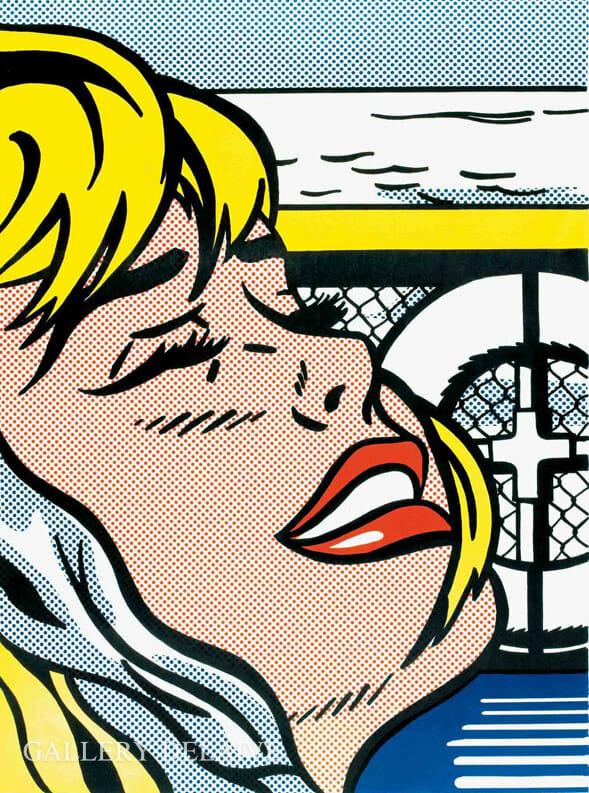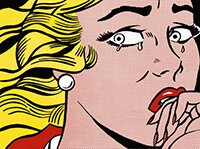About
Roy Lichtenstein, a pivotal figure in the pop art movement, built his innovative career on imitation. Starting in the early 1960s, he borrowed images from comic books and advertisements, later expanding to everyday objects, artistic styles, and art history. Richard Hamilton noted Lichtenstein’s ability to treat subjects equally, saying, “Parthenon, Picasso or Polynesian maiden are reduced to the same kind of cliché.”
Lichtenstein’s 1961 work, Girl with Ball, marked a departure from his abstract style and the art world’s prevailing tastes. He recalled that commercial art and cartooning were not yet accepted as legitimate art subjects. Lichtenstein meticulously copied source images by hand, adjusted compositions, and traced sketches onto canvas using a projector.
Using perforated templates, he replicated and exaggerated Ben-Day dots, a signature element of his style, integrating mechanical reproduction into fine art. His process involved reducing color palettes to primaries, eliminating details, and emphasizing contrasts and graphic codes of commercial imagery. In Drowning Girl, for instance, he modified the text and cropped the original scene, enhancing the damsel-in-distress narrative.
Lichtenstein later explored high art’s aesthetic clichés. In works like Brushstroke he parodied Abstract Expressionism’s autographic mark-making, transforming grand gestures into commercial and reproducible depictions. He said, “Visible brushstrokes in a painting convey a sense of grand gesture; but in my hands, the brushstroke becomes a depiction of a grand gesture.”
Art history remained a rich source for Lichtenstein. His Cathedral Series and Haystack Series reinterpreted Monet’s motifs with Ben-Day dots, industrializing Impressionism. In his Artist’s Studio series, he included references to artists like Matisse and even his own work, beginning a practice of self-quotation.





